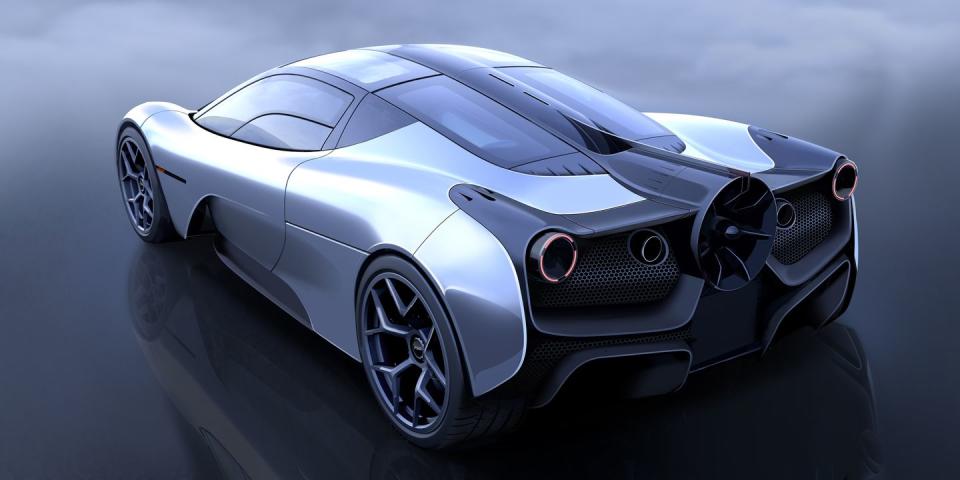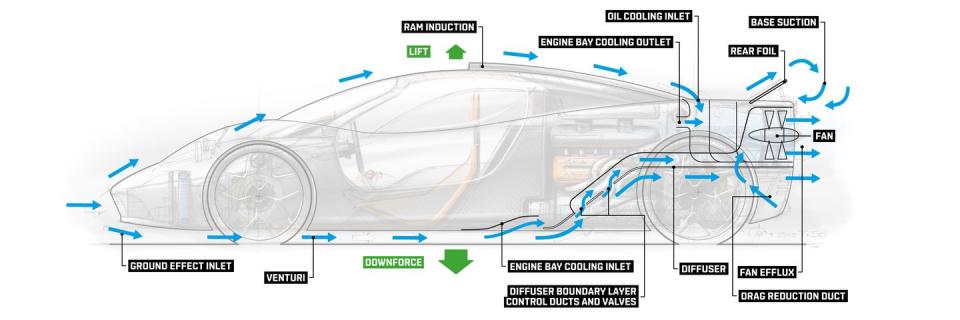Gordon Murray's T.50 Could Be the Last Great Analog Supercar

Celebrating Gordon Murray's 50 years as an automotive engineer, the T.50 is intended to carry on the tradition of the McLaren F1 (which he designed) at the more palatable price of about $2.6 million.
Gordon Murray Automotive will build 100 road cars and 25 track-only cars; the T.50 will be revealed in 2020, and customers will start taking delivery in 2022.
The company is doing wind-tunnel development in partnership with the Racing Point Formula 1 team—the one whose owner, Lawrence Stroll, is tied to a rumor he's going to buy Aston Martin.
We have already told you about Gordon Murray's plans to launch a new hypercar clearly inspired by the McLaren F1 he created in the early 1990s. Now Gordon Murray Automotive has released some more images and details and has also given us the chance to talk to Murray in more detail about it.
The T.50 is intended to be a celebration of Murray's 50-year career, the first product from what he hopes will be an ongoing car brand, but also a bookend to the story of ultrafast internal-combustion cars. "The modern supercar started with the [Lamborghini] Miura, in my view," Murray told C/D when we interviewed him at his company's headquarters in England last week. "The McLaren F1 was the central milestone: very sexy, pure lightweight, nothing it didn't need. So I thought, Why don't we do the last great analog supercar?"
The T.50 will share the McLaren F1's three-seat layout, naturally aspirated V-12 engine, and manual gearbox, but it is also set to add a hugely clever electrically powered aerodynamic system. While this draws part of its inspiration from the famous Brabham BT46B "fan car," which Murray designed in 1978—and which won the only Formula 1 race it ever entered in spectacular style—the T.50's active aero turns out to be considerably more advanced.
The BT46B used a motor-driven fan that was officially there to cool the engine to also suck air from beneath its skirted underside, replicating Lotus's ground-effects aerodynamics. The T.50 uses a less powerful 48-volt electric fan, clearly visible in the released rendering of the rear of the car, to allow a much more aggressive diffuser shape beneath the body.

"Normally, diffuser air won't follow anything more than a gradient of about 7.5 degrees. It just separates, so your diffuser shape has to be gentle," Murray explained. "Every designer on the planet would love to have a very aggressive diffuser like this, but the air will just say 'No, thanks,' and you end up with a pool of stagnant air where the diffuser has stalled, and the flow will just do its usual thing."
The electric fan is used to suck the dirty air from this disrupted boundary layer away from the top of the diffuser. "Once that's out of the way, the air has to follow the surface," Murray said. "At lower speeds you can generate much more downforce because the fan does the work. It's not literally sucking the car down, but it is creating a much more efficient diffuser."
While we haven’t been given downforce numbers yet, Murray insists the system’s ability to create different levels of downforce is much more important than its peak suck. The car will have both an auto mode and a high downforce mode, which will increase around 30 percent more, as well as an automatically engaged braking mode, which will deploy in the event of a serious stop. By generating maximum downforce, we're told, the system can take more than 30 feet out of the T.50's stopping distance at 150 mph.

 Yahoo Autos
Yahoo Autos 